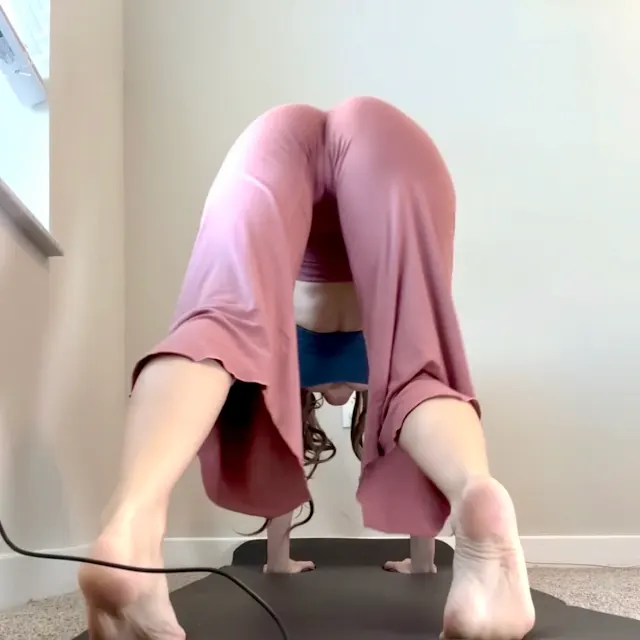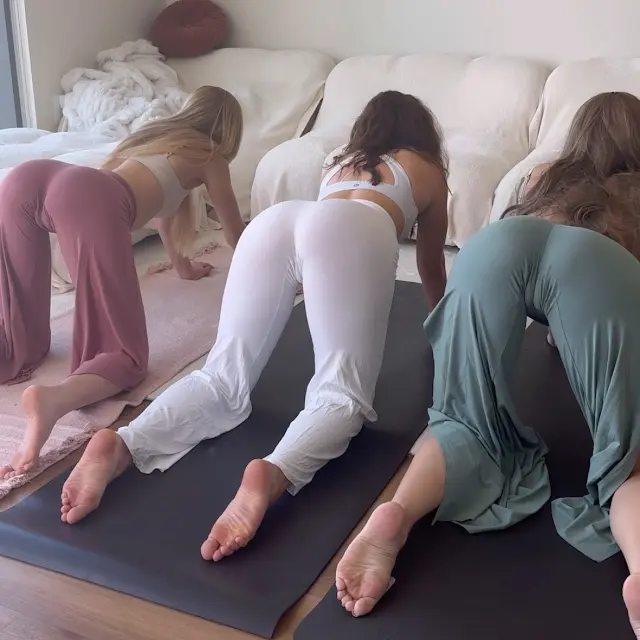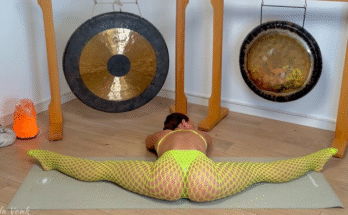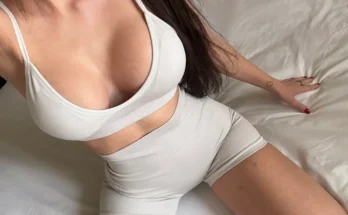
Whether you’re an athlete, a yoga enthusiast, or someone who just spends too much time sitting, tight legs can become a real issue. They can limit mobility, cause discomfort, and even lead to injury if not addressed properly. One of the most effective and accessible ways to stretch and lengthen tight leg muscles is through a deep leg home yoga stretching routine. No fancy equipment needed—just a yoga mat and a little bit of time and patience.
This routine focuses on gradually opening up the major muscles in the legs: hamstrings, quadriceps, calves, hip flexors, and inner thighs. You’ll also work on joint mobility and relaxation. Let’s dive into this full-body experience centered on your lower body.
Setting Up Your Space
Before you begin, create a calm environment. Turn off distractions, light a candle, play gentle music if you like, and roll out your yoga mat. It’s best to practice on a firm but comfortable surface. Have a towel, yoga block, or cushion nearby in case you need support.
Wear comfortable clothing and make sure your body is warm—either from a short walk, a warm shower, or a few minutes of light cardio. Never stretch cold muscles deeply.

Start with Grounding and Breath Awareness (2–3 minutes)
Sit cross-legged on your mat or lie down on your back with your legs extended. Close your eyes. Take a few deep breaths in through the nose and out through the mouth. Let your body settle. Notice how your legs feel—tight, heavy, light, sore, or anything else.
Focus on your breath. Inhale deeply and slowly, then exhale with control. Repeat this for several breaths to signal to your body that it’s time to release tension.
1. Downward Facing Dog (Adho Mukha Svanasana) – 1 minute
Start on your hands and knees. Press your palms into the mat, tuck your toes, and lift your hips toward the ceiling, forming an inverted “V” shape. Keep your knees slightly bent if your hamstrings are tight. Slowly pedal your feet, bending one knee at a time while pressing the opposite heel down. This gently stretches your calves and hamstrings.
2. Low Lunge (Anjaneyasana) – 1 minute each side
Step your right foot forward between your hands and lower your left knee to the mat. Slide the left leg back to feel a deeper stretch in your hip flexor. Make sure your right knee is directly over your ankle. Keep your chest lifted and hands resting on your thigh or raised overhead.
Breathe deeply into your hips. Hold for about 60 seconds, then switch sides.

3. Half Split Pose (Ardha Hanumanasana) – 1 minute each side
From your lunge, shift your hips back so your front leg straightens and your back knee stays on the mat. Flex your front foot and gently fold forward over your extended leg. This targets the hamstrings in a deep yet supported way.
Keep your spine long and don’t worry about touching your toes—focus on the stretch. Switch sides after one minute.
4. Pigeon Pose (Eka Pada Rajakapotasana) – 1–2 minutes each side
From Downward Dog, bring your right knee toward your right wrist and place your shin on the mat. Extend your left leg straight behind you. Square your hips as much as possible. Fold forward over your front leg for a deeper stretch.
This pose deeply stretches the hips, glutes, and even the thighs. Use a cushion or block under the hip if needed. Repeat on the other side.
5. Seated Forward Fold (Paschimottanasana) – 2 minutes
Sit with your legs extended in front of you. Inhale and raise your arms up, then exhale and fold forward from the hips, reaching for your feet. Bend your knees slightly if needed.
Let your spine round gently and your head hang heavy. This pose releases the hamstrings and the entire back body. Don’t force the stretch—just breathe and surrender into it.

6. Wide-Legged Seated Forward Fold (Upavistha Konasana) – 2 minutes
Spread your legs wide apart while seated. Flex your toes and keep your legs active. Inhale, lengthen your spine, then exhale and walk your hands forward. Only go as far as your body allows.
You’ll feel the stretch in your inner thighs and hamstrings. Use a bolster or cushion under your chest for support if needed. Stay here for a minute or two, breathing slowly.
7. Butterfly Pose (Baddha Konasana) – 1–2 minutes
Bring the soles of your feet together and let your knees fall open. Hold your feet or ankles and gently press your knees down. You can stay upright or fold forward for a deeper stretch.
This pose targets the inner thighs, hips, and groin. Avoid bouncing—just let gravity do the work. Breathe deeply into the hips.
8. Reclining Hand-to-Big-Toe Pose (Supta Padangusthasana) – 1 minute each side
Lie on your back. Extend one leg straight on the floor and raise the other toward the ceiling. Hold the raised foot with your hand, yoga strap, or towel. Keep the extended leg grounded and flex both feet.
This stretches the hamstrings and calves. Try to keep your lower back pressing into the floor. Switch sides after one minute.

9. Happy Baby Pose (Ananda Balasana) – 1–2 minutes
Still lying on your back, bend your knees and bring them toward your chest. Grab the outsides of your feet with your hands. Open your knees wider than your torso and press your feet gently toward the floor.
This pose opens the hips and stretches the inner thighs and lower back. Rock side to side gently to massage your spine.
10. Legs Up the Wall (Viparita Karani) – 2–3 minutes
Move to a wall. Sit sideways with one hip against the wall, then swing your legs up as you lie on your back. Your legs should be vertical against the wall, with your back and arms relaxed.
This is a restorative pose that improves circulation and relaxes the leg muscles after deep stretching. Stay as long as you like, focusing on your breath.
Cool Down and Final Relaxation
After the routine, take a moment in Savasana (Corpse Pose). Lie flat on your back, arms at your sides, palms facing up. Close your eyes and breathe naturally. Let your body fully absorb the practice. Stay here for 3–5 minutes.

Tips for Success
- Listen to your body. Deep stretches should feel intense but not painful.
- Use props. Cushions, blocks, and straps can help you feel more supported.
- Be consistent. Stretching once is helpful, but regular practice leads to long-term mobility and flexibility.
- Hydrate and rest. After deep stretching, your muscles need water and recovery time.
Conclusion
A deep leg yoga stretching routine at home is a powerful way to release stored tension, increase flexibility, and feel more connected to your body. Whether you’re unwinding after a workout, starting your day, or simply seeking relief from stiffness, these poses can help restore movement and comfort to your legs.
Commit to doing this routine 3–5 times a week, and you’ll likely notice a big difference in how your body feels. Yoga isn’t just about flexibility—it’s about listening inward, honoring your limits, and taking care of your physical and emotional well-being, one stretch at a time.



